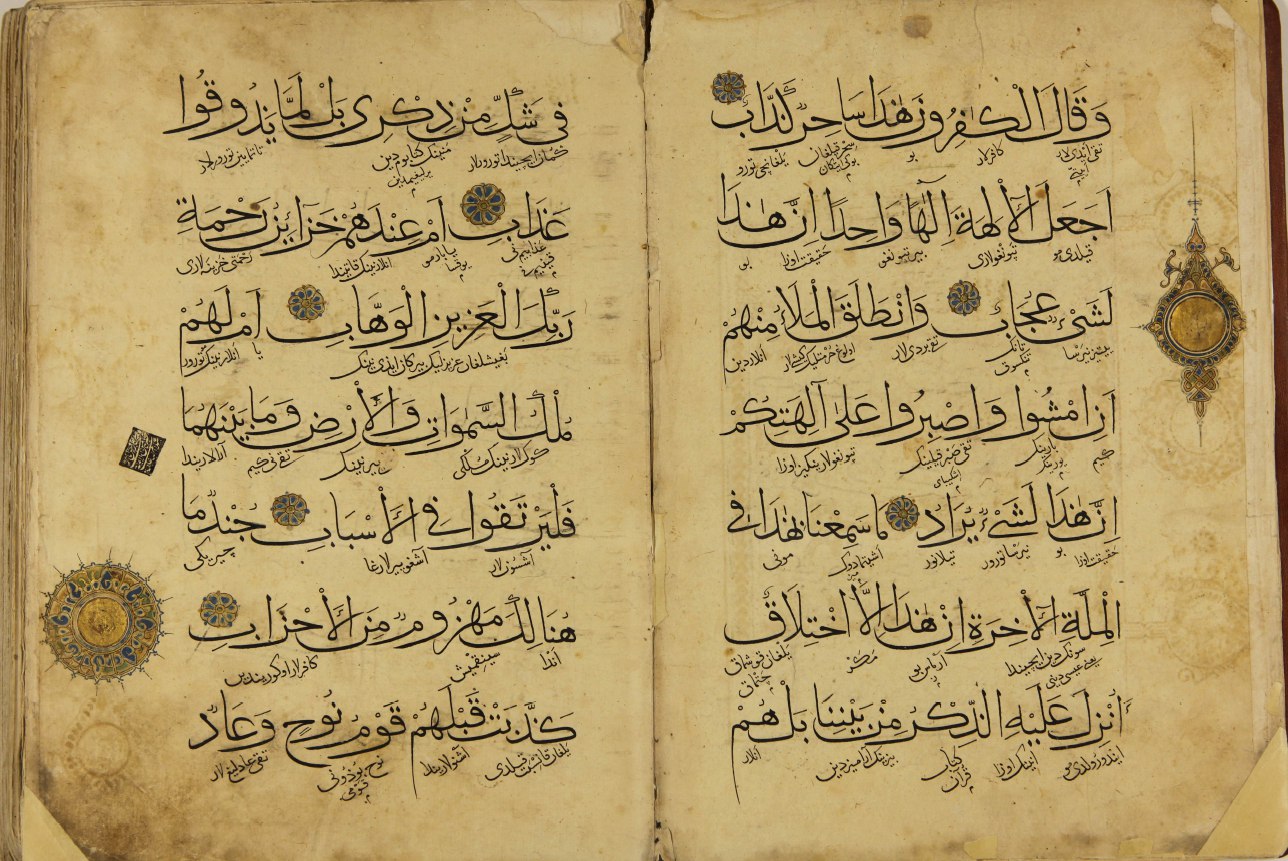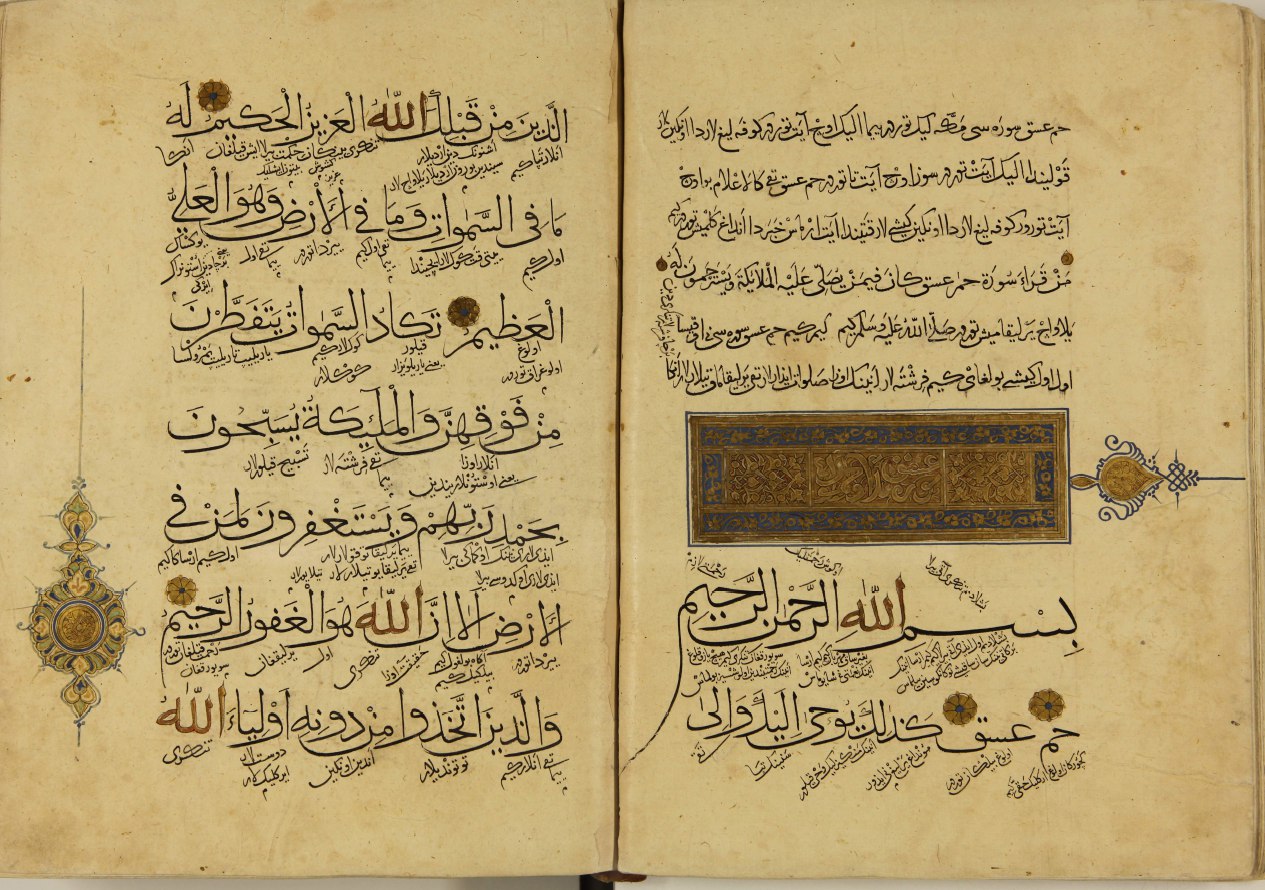The oldest translations of the Holy Qur’an at the Center of Islamic Civilization

In the Qur’an Hall of the Center of Islamic Civilization in Uzbekistan, a unique 14th-century Turkic translation manuscript of the Holy Qur’an is on display a heritage specimen of great religious, scholarly, and cultural significance. Written in Eastern Turkic (Khwarezm Turkic), it is recorded in history as one of the oldest translations with an exact date. This Qur’an is highly valued not only for conveying Islamic teachings in the Turkic language but also as a lasting legacy in calligraphy, illumination art, and linguistics.
According to the colophon, it was copied by Shaykh Yusuf al-Abarī’s son, Muhammad a famous calligrapher bearing the title “Sayyid al-Khattat” and completed on Friday, 10 Sha‘ban 737 AH, corresponding to March 14, 1337 CE. For this reason, this version is considered the second oldest Turkic translation with a precisely recorded date, and the third among all known translations. The text covers from Surah Ṣād to the end of the Qur’an. Written in an interlinear translation and commentary style, it provides several Turkic equivalents for each Arabic word, renders “Bismillah” differently at the start of each surah, and explains the disjointed letters (ḥurūf al-muqaṭṭaʿāt) such as Alif, Lām, and Mīm.

The tafsir sections include information on the circumstances of revelation of each surah, the virtues of reciting them, hadiths, details about different schools of Qur’anic recitation, events in Islamic history and traditions, stories about Dawud (David) and ‘Isa (Jesus), as well as detailed accounts of the Conquest of Mecca and the family members of the Prophet (peace be upon him).
The outward appearance of the Qur’an is of high artistic value. It is copied in nasta‘liq and naskh scripts on saffron-colored, decorated ahar paper. Surah names are written in blue on a yellow background, and translations are given in red. Pages are bordered with yellow lines made with thread, and verses are separated by star-shaped ornaments. On two facing pages there are pearl-like illuminated miniatures, while the binding is decorated with patterns of yellow grape clusters on a red background. The mastery of calligraphy and decoration indicates that this Qur’an was prepared on the commission of a major patron.
The sources of the Qur’an’s commentary are extensive, the main one being the word of Allah the Qur’an itself. In addition, it contains the views of renowned exegetes such as ‘Abd Allah ibn ‘Abbas, Qatadah ibn Di‘amah, Mujahid ibn Jabr, and Muqatil ibn Sulayman; narrations from Abu Hurayrah; Ahmad ibn Hanbal’s Musnad; the Kutub al-Sitta collections; Nizam al-Mulk’s Siyasatnama; and al-Tabari’s Jami’ al-Bayan and Tarikh al-Umam wa al-Muluk.

Today, this manuscript is preserved in the Astan Quds Razavi Library of Iran under the number 293, while another copy is presented in the Qur’an Hall of the Center of Islamic Civilization in Uzbekistan, open to both visitors and researchers. It is a unique example of the religious and cultural life of the Turkic peoples in the 14th century, reflecting the linguistic features, calligraphic traditions, and illumination art of the time, and stands as an invaluable source for the study of Islamic heritage.
Durdona Rasulova
P/S: The article may be used provided that a link to the Center’s official website is included.
Most read

Over 100 experts from more than 20 countries of the world are in Tashkent!

The Center for Islamic Civilization – a global platform leading towards enlightenment

The museum of the Center for Islamic Civilization in Uzbekistan has been further enriched: unique artifacts from different parts of the world have been presented as gifts











